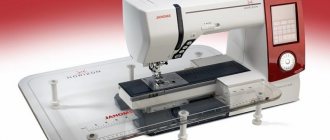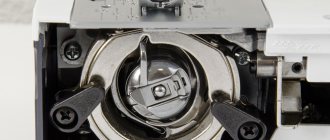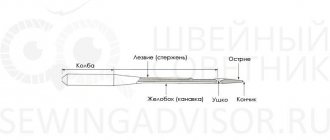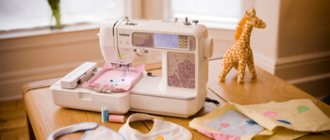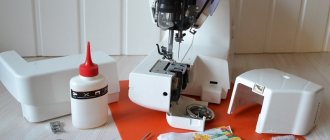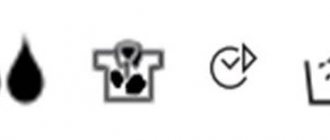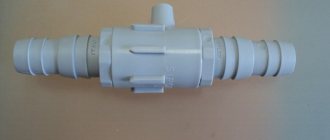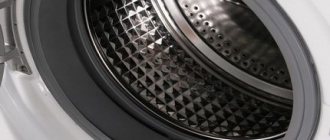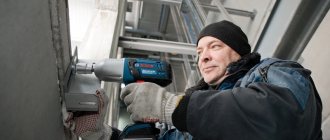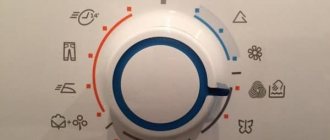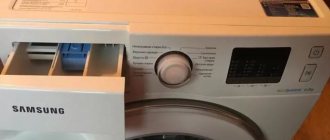Presser feet for basic operations
This category includes feet that can be used to make basic types of seams (straight stitch and zigzag), sew on a zipper or button, and process the edge of the material.
Universal zigzag foot
This foot is always included in the package. With its help, you can make both a straight stitch and a zigzag stitch of different widths. There are options with a special button for fixing the sole in a horizontal position. This feature will be useful when passing through areas with a sharp difference in fabric thickness, for example when crossing seams.
For straight stitch
Designed for even, straight stitches, which are helped by a small needle hole. This sole provides better quality stitching on sliding materials (for example, silk or satin).
For zipper
There are several types of feet that are designed for attaching zippers:
They can also be used for sewing on piping or stitching in difficult places.
For a blind seam
The special design of this foot is designed for working with thick fabrics and making invisible stitches on them. Most often used for hemming the bottoms of products (skirts, trousers, etc.). First, the part must be folded in a special way and a secret stitch must be selected on the machine.
Always perform a trial blindstitch on a sample of the fabric you are using to find the best settings for your job!
Overlock
This foot has a pressure plate and a guide, thanks to which the edge of the fabric is not pulled together and is leveled when sewing. There are models with a side knife that allow you to combine processing and trimming the seam allowance, just like an overlocker does.
For buttons
Using a sewing machine, you can quickly sew buttons with holes, the width between which should not exceed the maximum zigzag width of the machine. The special foot for this operation has rubberized linings for reliable fixation of the button. Sewing is done using a zigzag stitch and the lower feed is turned off.
For loops
The processing of the edges of the machine's slotted loop is carried out in 1 or 4 stages ( automatic or semi-automatic ) and different paws are needed for this. Special frames are available for automatic loops. They can have a loop length selected for a specific button, for which it is installed in the back of the frame and fixed. Additional markings are applied to the sides of the frames for semi-automatic hinges. Modern machines offer a touch loop function and, accordingly, a special foot.
For bias binding and hems
Processing products with bias tape or hemming a cut are frequently performed sewing operations. The feet for them are sometimes called “snails”, for the specially curved soles that bend the binding or the cut of the part is immediately stitched to the product. Available in different widths.
Darning device
When darning, it is necessary to turn off the feed dog and set the feed dog position switch to “B” - embroidery, so that the teeth do not protrude above the needle plate during operation and do not advance the fabric. The material is advanced manually, at the moment when the darning device together with the needle rises above the fabric. The foot with a ruler, included in the set of the Chaika, Podolsk sewing machine, is designed for making parallel lines. A ruler extended to the required width helps control the distance between lines. The edge of the ruler runs along the stitch that has already been made and this allows you to make parallel stitches without preliminary marking, for example when stitching a blanket.
For decorative works
Using a sewing machine, you can not only sew together parts of a product, but also decorate the model with ruffles, cords, embroidery and other techniques.
For decorative stitches
The name “for satin” or “satin” stitches is also used. The sole has a wide open space and is often made of clear plastic, allowing you to see all the stitching and markings. Sliding plates smooth the thread, providing a “satin” surface.
For gathers and folds
In combination with the increased tension of the upper thread, this foot allows for uniform shirring of the part. You can immediately sew the frill to another, even fabric. There are also special devices for folds that allow you to set the exact value of the interval and depth.
For attaching cords and piping
These feet have a groove into which a finishing cord or thick decorative thread is inserted. Used for finishing clothing and accessories, interior textiles. Available for one, three, five or seven cords (depending on the manufacturer), it can also be designed for cords of different diameters.
For tucks
The sole with parallel grooves allows you to make neat pintucks on thin fabrics (up to 9 pieces, depending on the model). An additional plastic “tab” that is fixed to the needle plate will help create a more embossed finish.
For ribbons, rubber bands
The special design of the sole has a hole in front for braid or elastic of different widths, so that the finishing is evenly fed under the needle. Options with a wide slot are suitable for working in the chenille technique.
For beads and beads
Transparent feet with a groove are designed for attaching threads of beads, pearls and other beads. Designed for a specific diameter indicated in the description.
For fringe
In the middle of the sole there is a protrusion, due to which voluminous loops are formed when sewing. After completing the stitching, they are cut to form a fringe. Also suitable for making copy stitches.
For embroidery
These presser feet typically have a ring-shaped sole and are often made of clear plastic with an open front to allow maximum stitch visibility. The design of many models includes a spring. They can also be used for free stitching or darning.
For quilting
Patchwork feet can be divided into two groups:
- for grinding parts;
- for quilting the assembled fabric.
In this technique, it is especially important to sew all parts with the same width of seam allowance, which, according to tradition, is ¼ inch. Therefore, patchwork feet are made with this width of one or two halves. They can have a built-in guide and be transparent.
For quilting, spring feet are used in the form of a ring, sometimes with an open front. The guide can be installed separately or built-in. An overhead feed is often installed for this purpose, and Bernina has developed a special BSR foot that allows you to adjust the stitch length as you work for maximum accuracy when sewing multi-layered items.
Presser feet for sewing machines: description, purpose
Sewing machine feet are the main components without which the sewing process is impossible. Standard feet for sewing machines are universal, straight-stitch, for sewing in a zipper, for sewing a buttonhole. In addition to them, there are many special feet, for example, a foot for sewing in a hidden zipper, for sewing on buttons, for satin stitches, for sewing on a cord, for making a hidden seam, for darning, embroidery and many others.
Review of special feet for sewing machines: video master class
By the way, many people don’t even use them, although they come with the machine.
And all these paws lie in special compartments for storing accessories for years. But each of them is a little assistant that can not only facilitate the sewing process, but also speed up and improve the quality of individual operations. For example, sewing leather and suede, knitwear and jeans, silk and chiffon using special presser feet will be a convenient and easy process. A description of how to use standard presser feet is in the instructions for your sewing machine. But, as a rule, it is quite meager, and there is no additional accessories at all.
Types of sewing machine feet
Gathering foot
With its help, you can make a gathered stitch on a machine and save time. The density of the gathering is regulated by the tension of the upper thread and the width of the stitch. With a wider stitch, the gathering is tighter. Thin fabric shrinks more, thick and dense fabric shrinks less.
To get the expected result when performing this operation, first try gathering on a piece of fabric from which you are going to sew the product. Cut a piece of a certain length and see how long the assembly turns out to be. This way you can calculate the entire length of the frill.
Upper feed or walking foot
allows you to sew several layers of fabric at the same time without moving them. Excellent for stitching items. This foot is used for patchwork and quilting.
In some models, the upper transport is already built into the sewing machine.
Teflon foot
Designed for sewing products made of genuine leather, artificial leather and coated fabrics. Instead of a Teflon foot, you can use a roller foot, which moves the fabric forward using torque. The fabric you choose will tell you which of these two feet you prefer. The roller foot also copes well with heavy materials, some types of raincoat and jacket fabrics.
Today there are combined models on sale - a Teflon foot with a roller.
Universal zipper foot
In addition to its main task, it can be used to finish a product with edging. If the edging is narrow, then you need to sew it on like a zipper. If wide, close to the edge.
Snail foot for sewing bias tape
eliminates the process of manually basting the binding and significantly speeds up the process. To work with it, just cut a strip of fabric along the bias of the required width, tuck it into the foot and you can sew. It turns out neat and beautiful.
Important! The width of the intended binding is recommended in the instructions for the foot. If you cut or take the finished binding wider than necessary, it will not wrap correctly, and excess fabric will cause the binding to wrinkle inside the device.
The foot for sewing bias tape is suitable for both ready-made and unfolded tape. The finished binding is inserted higher, through the gap in the “snail”. And the unfolded one goes into the main hole of the foot. If there are several holes in the “snail” and they are of different sizes, then using this foot you can sew on bindings of various widths. These holes also make it easier to move the bias tape forward.
Overlock presser feet: video master class
Knitting foot
useful for those who do not have an overlocker. It makes it easier to work with such sewing knots as darts, hems of hems and sleeves, and stitching of the neckline on knitwear.
Universal foot for sewing bias tape
Suitable for sewing on any bias tape, any width - the screw on the foot allows you to set the required width. The foot is easy to use as it is easily attached to the machine and also easily removed. And the result exceeds all expectations.
Pintuck foot
ensures an ideal process - the speed of the operation increases, quality improves, labor costs decrease, tucks are even and at the same distance from each other. Before starting work, mark the line of the first stitch. To make the tucks more textured and convex, place a special plastic tongue under the fabric (they come in different sizes). Very narrow tucks, 1 mm wide, are made using a buttonhole thread.
Edge sewing foot
will help to lay an even finishing stitch along the edge of the product.
Device for sewing in a circle: video master class
Photo: BurdaStyle.ru; Yulia Dekanova Material prepared by Yulia Dekanova
Presser feet for special materials
We will put into a separate category devices that make it easier to sew difficult materials, such as elastic ones or those with a slippery surface.
Please note that to achieve high quality stitching you will also need appropriate needles and threads.
Upper conveyor
You can often find the name “walking foot”. Designed for multi-layer projects, stitches, suitable for sewing finicky materials. As the name suggests, the main task of the upper conveyor is to “duplicate” the work of the lower conveyor. Thus, uniform advancement of the material on both sides is achieved. Can be produced with a guide and replaceable soles.
Teflon and roller
Two types of feet for working with leather, vinyl and similar materials that are difficult to move. The Teflon foot sole is made of special sliding plastic, and the roller foot facilitates advancement due to torque.
For knitwear
This design includes a special stop, and sometimes a silicone pad, due to which it is possible to avoid elastic material from getting into the teeth of the lower conveyor. The presser foot requires proper installation, with the long lever inserted behind the needle bar.
How to choose?
It is important to know that not every presser foot will fit a specific machine. In general, the paws are designed for different zigzag widths and different fastening methods. The easiest way is to indicate to the seller the model of the sewing machine and the desired functionality of the foot, or select the appropriate category of machine in the search on the website.
Manufacturers of sewing equipment produce their own accessories, and by purchasing such a product, you can be sure of its compatibility and quality. On the official website you can download a catalog of manufactured accessories and, by selecting a presser foot, send its code in a request to the seller.
When purchasing products from third-party brands, you should make sure that the foot is suitable (for example, based on customer reviews) and find out in advance about the possibility of exchange.
The capabilities of sewing technology are significantly increased with the use of special accessories. By changing the presser feet you can significantly improve the quality of sewing and save time.
